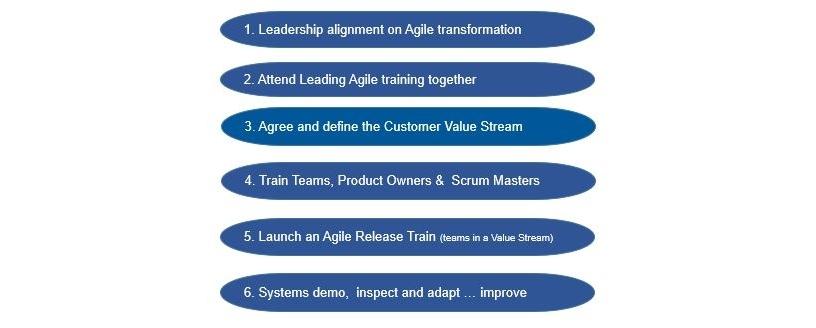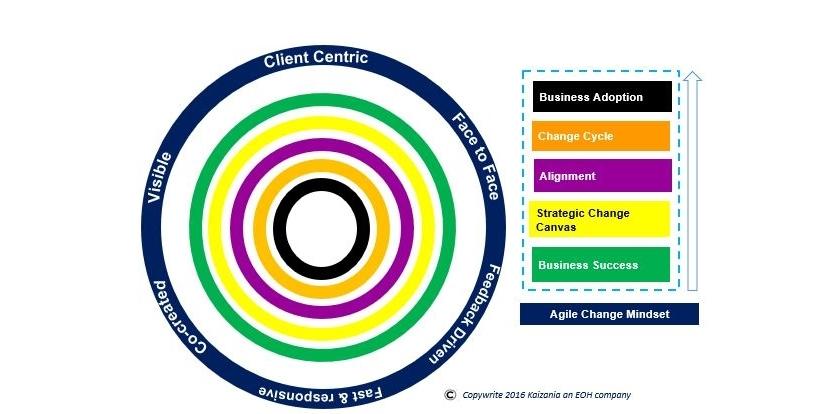
Vanessa Martens, Executive at Kaizania, says, "Organisations globally and more recently in South Africa are realising the benefits of implementing an agile approach to transforming their business, which include improved speed to market with new solutions that have fewer defects."
As a philosophy, agile encourages:
* Individuals and interactions over process and tools.
* Working software over comprehensive documentation.
* Customer collaboration over contract negotiation.
* Responding to change over following a plan.
Agile methodology allows companies to innovate fast, learn from mistakes and successes, and then innovate further based on feedback received. Defects are fixed as they go along and not at the end of the process. Key to success is the ability of business and IT to work together and communicate openly, says Martens. This is where the obstacle often lies.
While 94% of respondents to VersionOne's annual State of Agile survey said that their organisations practised agile, they also said that more than half (60%) of their organisation's teams were not yet practising agile. The top six benefits of introducing agile, according to VersionOne's State of Agile survey:


For years we've been saying that IT and business need to collaborate more closely. This is no longer a nice to have. It's a business imperative. Yet, as highlighted by the statistics above, while some businesses may attempt to implement agile methodology, adoption rate by employees is sometimes lacking. The key to successful agile implementation, says Martens, is to implement the methodology itself in an agile manner.
Certain steps need to be adhered to in order for this to work, the first being getting management buy-in for agile transformation.

As much as when introducing agile to an organisation, there are similar steps that must be adhered to when embarking on any agile project, continues Martens. These include running a planning increment up front then running through the cycle of development, release of the latest version, receiving feedback and adapting the plan to accommodate that. And so the cycle begins all over again. "We recommend two-week sprints with 10-week reviews," says Martens.
This approach enables you to run agile at scale across the business. You don't just transform teams, you take the whole business and map value from the start to the end of the value stream. She cites the example of a customer loyalty programme that captures the customer's details once and they never ever again have to provide documentation. "Imagine how much happier a long-term customer will be at not being asked repeatedly to produce a copy of their ID, for instance," says Martens.
"The biggest challenge we see in most organisations when implementing agile teams is the alignment of business and IT. It's about building jointly responsible teams in which IT and business work together daily on delivering the software. Business doesn't feel it has time to spend with the IT team daily - and often don't feel it's their job to do so. IT feel they have enough technical knowhow to get on with what they have to do without consulting business. This can result in them going down a development path without confirming it's what the business wants, then having to redevelop when business isn't happy with the outcome."
There are ways to manage this conflict. One is to always start implementing agile transformation at leadership level, says Martens. "You need leadership understanding and buy-in around how agile will fundamentally change their business. It has to be clear that agile isn't an IT implementation, it always fundamentally changes an entire business. In order for agile to work, you need to change the business's operating model, how it budgets, how it measures and tracks success (metrics) and even team structures. Even governance and risk will be affected. All aspects of the business will be tracked more visibly than ever before. But this requires fundamental changes to business processes.

"Businesses need to realise the benefits of agile. It reduces paperwork substantially, it simplifies processes, you don't need to commit a massive budget and make big decisions up front, you just need to know enough to start as the solution will be tested as it goes along to ensure it's the right one for the business. Teams are no longer siloed, they work closely together and collaborate for the good of the whole. No one person owns all of the information, it's shared and it's visible."
How agile works and how it should roll out
Agile means that IT comes up with small concepts of what the business wants, a demonstration is held after two weeks, then the team moves on to the next stage. By working in two-week sprints, reviewing and then moving on with feedback, the solution can be adapted on the fly. You can test an idea and see whether it works, if it does, they can go with it, if it doesn't, it can be changed. This enables the organisation to focus on the real priorities of the business.
Martens concludes: "From a business perspective, they're always responsive when they see how well the process works and once they understand it, they almost lead it. Developers, on the other hand, are sometimes anxious to make their work more visible, they like working in isolation where they can do what they want. Suddenly their activity is more visible and they have to share information instead of one person owning the knowledge. This is why it's essential to bring business and IT together to run agile programmes."

Share